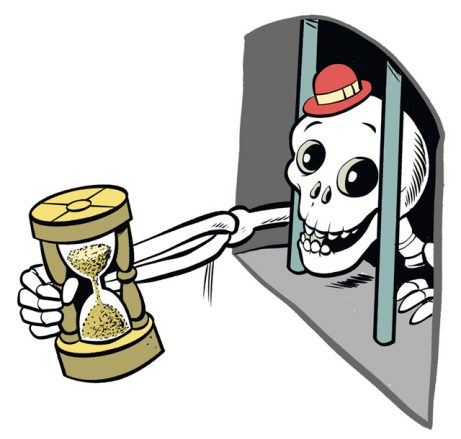Holy Grail
Maybe you didn't catch all the details of your hunt for the Holy Grail. So below you'll find all the magical places in this game.
1. Vojanovy sady (Vojan’s Orchards)
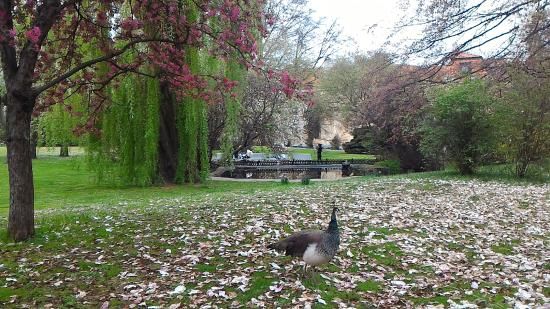
It is a picturesque public park in Prague's Lesser Town. It is sometimes even considered the oldest garden in Prague, as its history dates back to the Middle Ages. Its space was definitively defined by two palaces from the north - Thurn - Taxis and Windischgrätsky and the Church of St. Joseph from the west, which is part of the convent of the Barefoot Carmelites. At the end of the 18th century, the garden became the property of the Society of English Maidens. It slowly changed from a commercial orchard to an English park. Now Vojan's Orchards is a beautiful garden designed primarily for spiritual relaxation.
Translated with DeepL.com (free version)
Task in the game
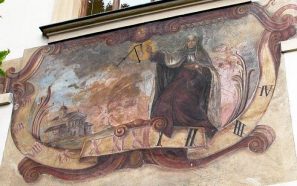
Sundial shows from 6am to 5pm
17 - 6 = ?
Result
11 / Latin UNDECIM
2. Hergertova cihelna (Herget’s Brickworks)
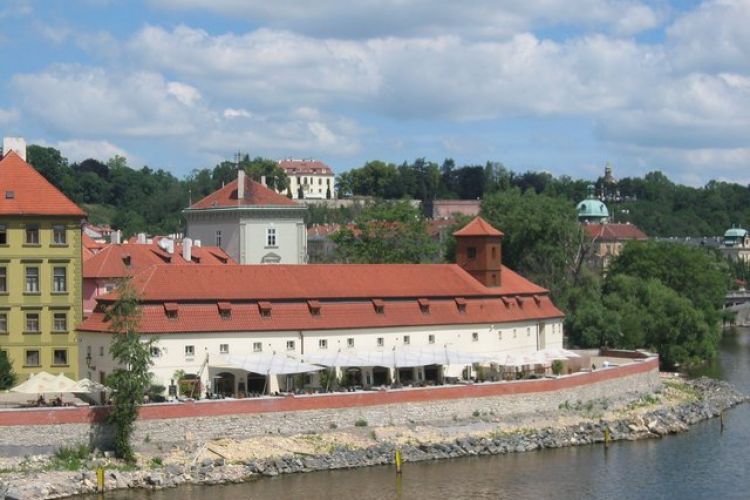
The first documented references to this area date back to the 14th century. The name dates back to 1781, when the owner Fal Hergert built a brickworks on this site. In addition to the terrace and a beautiful view of the Charles Bridge and the Vltava River, the Franz Kafka Museum exhibition has been located here since 2005, and thanks to the small harbour it is a popular place for wedding ceremonies.
Task in the game
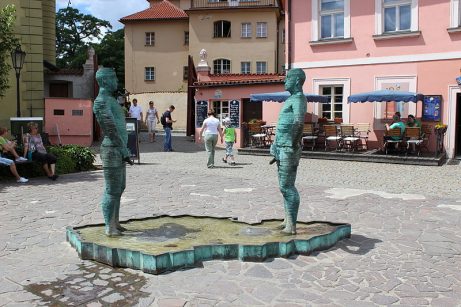
The sculpture "Peeing Boys" was created by Czech sculptor David Černý and is part of public art in Prague. The sculptor Černý is known for his provocative and controversial works that often provoke discussion about society and culture.
The shape of the fountain corresponds to the shape of our country in the middle of Europe
Result
CZECH / Latin BOHEMIA
3. Lužický (Lausitzer) seminar of st. Peter
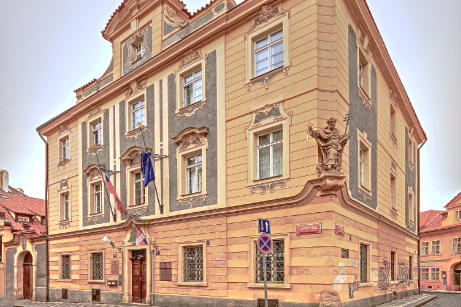
It was founded in 1724 as a seminary for the preparation of future Roman Catholic priests coming from Upper Lusatia. The chapel on the first floor of the house is also dedicated to St. Peter.
In the neighbourhood of the seminary is the traditional style bookshop Shakespeare & Sons. It offers gems of literature by local and foreign authors in their original versions.
Task in the game
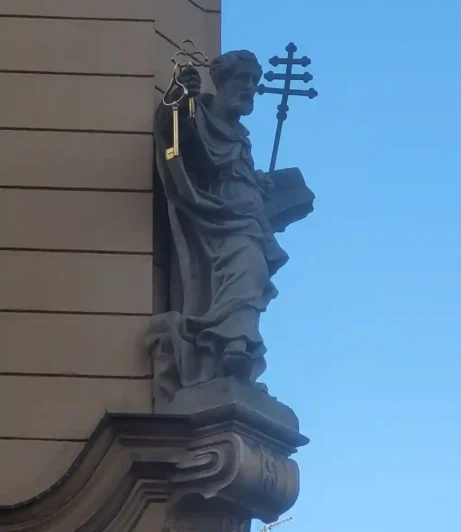
St. Peter holds the key in his hand.
Result
key / Latin CLAVIS
4. Candelabra street lighting
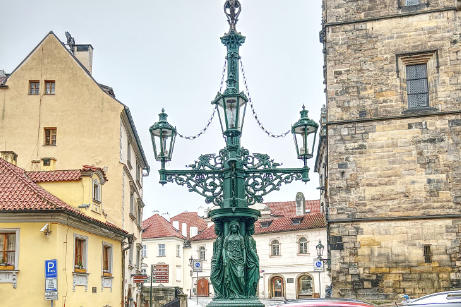
Historical candelabras add to the mysterious atmosphere of the historical part of the centre of Prague. The unique lighting, like the Charles Bridge lighting, is connected to gas and illuminates the fairy-tale corners of the Lesser Town Bridge Tower on Dražický Square.
In Czech, the term Kandelábr was already used in the 19th century for public lighting stands, especially for gas lighting stands.
Task in the game
The gas lamps on the candelabra are lit every evening by an electric spark.
Result
spark / Latin SCINTILLA
5. The Charles Bridge
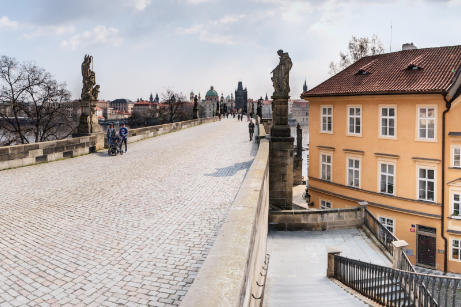
Until the middle of the 19th century, Charles Bridge was the only way to cross the Vltava River in Prague. It connects the Old Town with the Lesser Town.
The bridge is 515 metres long and 9.40 to 9.50 metres wide.
The height of the stone walkway is 13 m above the normal level of the Vltava River. It is broken three times along its length and slightly convex upstream. It is made up of 16 arches and 30 statues and sculptures stand on it.
Task in the game
As the fifth in order, the statues of St Augustine and Nicholas of Toletín stand opposite each other on the Charles Bridge. Both of them hide in their inscriptions an identical year hidden in Roman numerals, which indicates when both of these statues were completed and placed on Charles Bridge.
Result
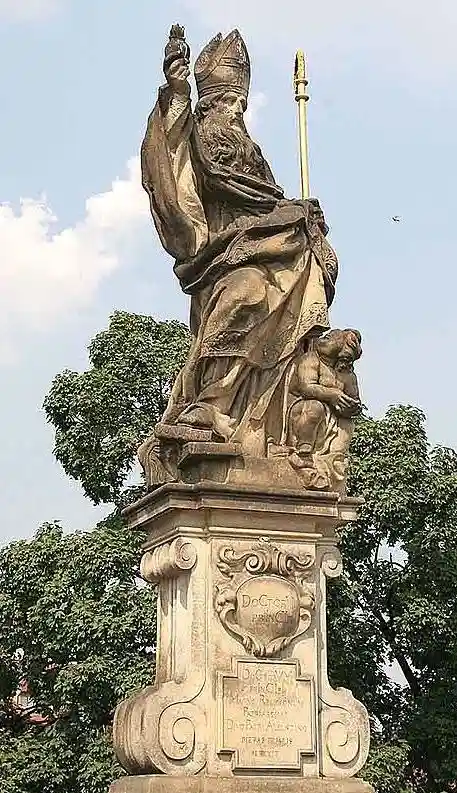
The statue of "St. Augustine" with a dominant Latin inscription on the plaque:
DoCtorVM prInCIpI
From the inscription, select the capital letters that represent the Roman numerals: DCVMICII
Then you must sort them from the largest Roman numeral to the smallest as follows: MDCCVIII
Now the recalculation can be done:
M = 1000
D = 500
CC = 200
VIII = 8
Add up : 1000 + 500 + 200 + 8 = 1708.
For interest, the opposite statue of "Nicholas of Toletín" contains another inscription, which encodes a slightly different Roman inscription, but the resulting year after recalculation is identical - i.e. again 1708.
fIDeLIVM ConsoLatorI
MDCLLVIII
M = 1000
D = 500
C = 100
LL = 50+50 = 100
V = 5
III = 3
1000 + 500 + 100 + 100 + 5 + 3 = 1708.
So both paths lead to the same goal.
1708= MDCLLVIII= MDCCVIII
6. National Theatre
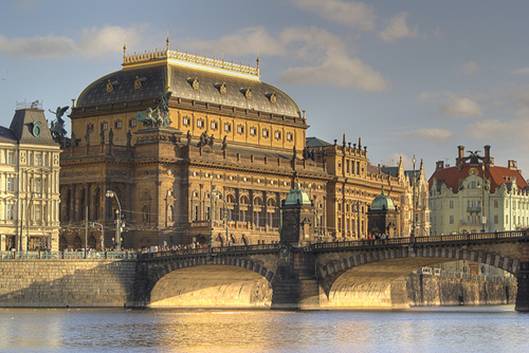
The National Theatre is not called the Golden Chapel for nothing. More than two and a half kilograms of 24-carat gold were used to decorate its roof.
Task in the game
What colour is the top of the roof of the National Theatre.
Result
golden / Latin AURUM
7. Voices from the Underground
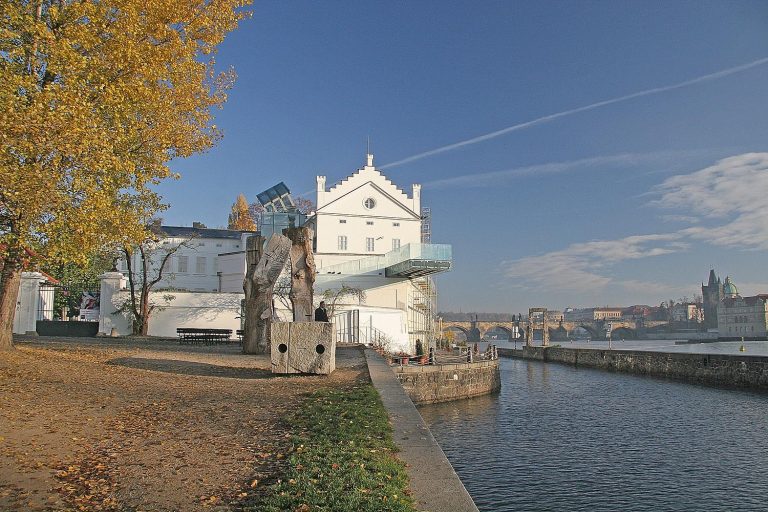
The Sovovy mills building was built from the oldest mill in Prague, which was used mainly for milling barley from the 15th century until it burned down in 1896. Now the former Owl Mills building on Kampa Island is inhabited by exhibits of modern art.
A set of canal hatches, called Voices from the Underground, includes canals with quotations from eleven poets whose work is associated with Prague.
The motto of the whole collection is a quote by Marcel Duchamp: "The great artist of tomorrow will retreat to the underground."
By installing the work in the public space of Kampa, these contents have become accessible to all of us.
Task in the game
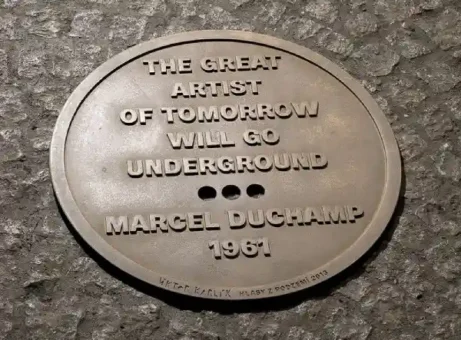
The text on the circular hatch could be decoded according to the following sequence [1,2],[2,4],[3,2],[5,3],[7,1],[8,10],[6,2],[3,1]. The first digit indicates the word and the second the order of the letter in the word.
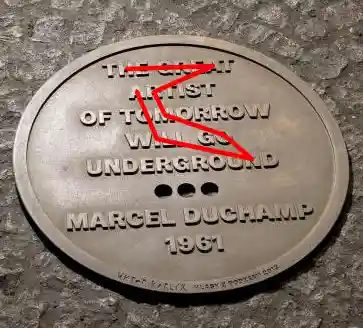
Result
harmony / Latin HARMONIA
8. Statue "Sitting Girl"
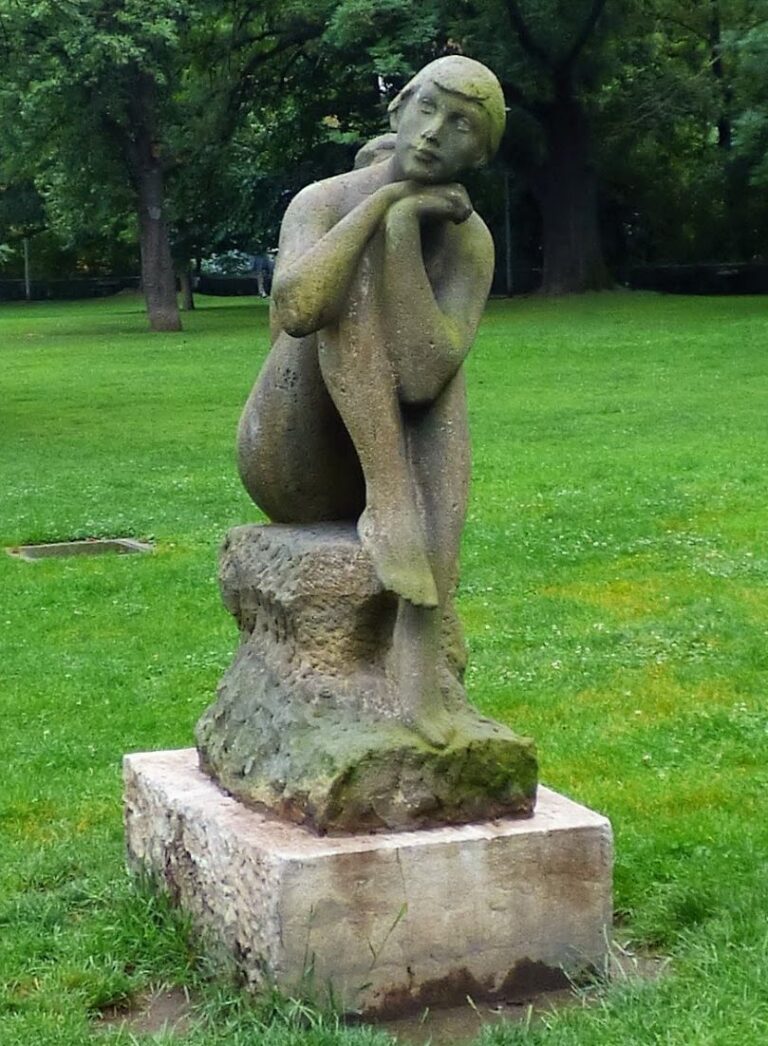
The sculpture Sitting Girl or Jarmila is a work of Jan Hana from 1965. It is located in the park on Kampa Island, in its central part by the road from Owl Mills to Michna Palace.
Task in the game
What is the girl depicted in the statue doing, what is the expression on her face ?
The aim of this question is to also attack the other cerebral hemisphere of the players to use their imagination.
Result
dreamy / Latin SOMNIUM
9. Memorial Tree
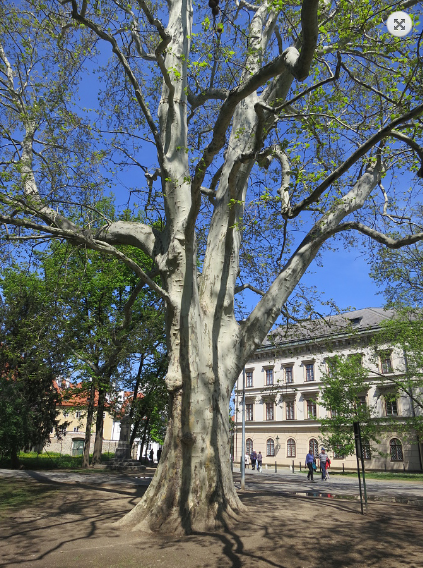
This tree of unusual size and age is a significant feature of the landscape. It is the remnant of the former Velíkovská Garden. Kampa Island was unified into the current single park as we know it today only at the turn of 1940’s and 1950’s. The ancient plane tree is the largest tree in Kampa Park and said to be over 200 years old.
Task in the game
Identify the type of memorial tree. And answer in Latin.
The information table contains the Latin name of the tree "Platanus acerifolia"
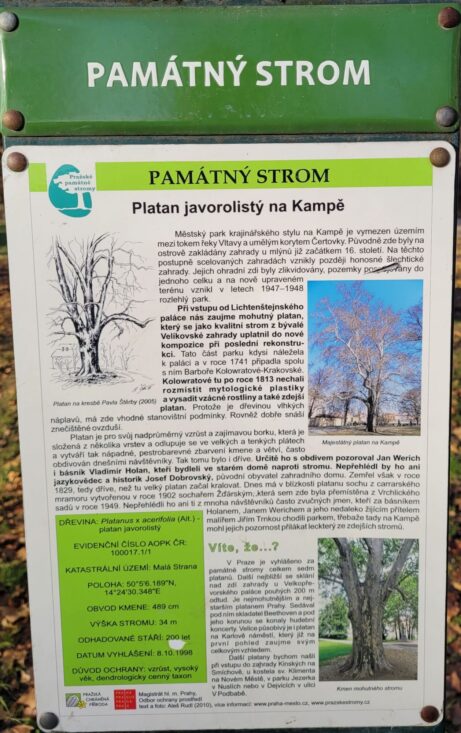
Result
plane tree / Latin PLATANUS

10. The Infant Jesus of Prague
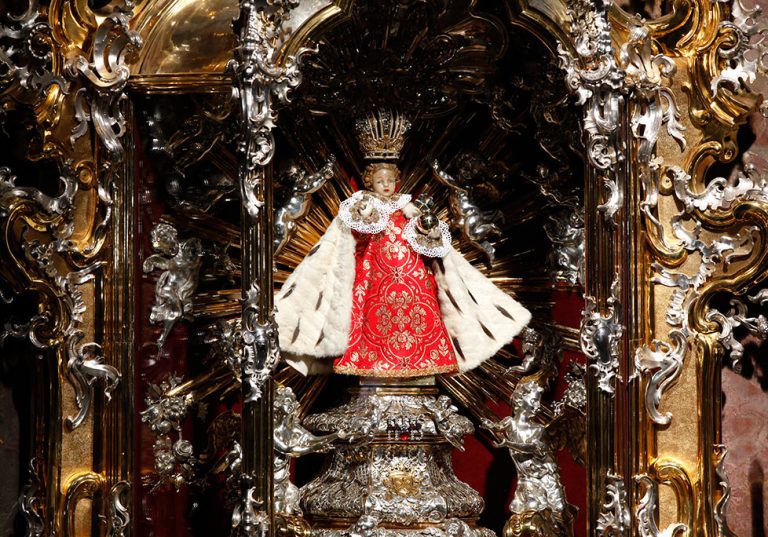
The star on the tower of the Church of Our Lady of Victory with the adjacent monastery of the Barefoot Carmelites is located in the Lesser Town in Karmelitská Street. The church is especially famous for its statue of the Infant Jesus of Prague, for which it is often nicknamed the Infant Jesus of Prague. An interesting feature is the regular dressing of the statue of the Infant Jesus, which emphasises his true humanity - just as a mother dresses her child, so the Carmelite sisters dress Baby Jesus.
Task in the game
What is the shape of the holy water fountain?
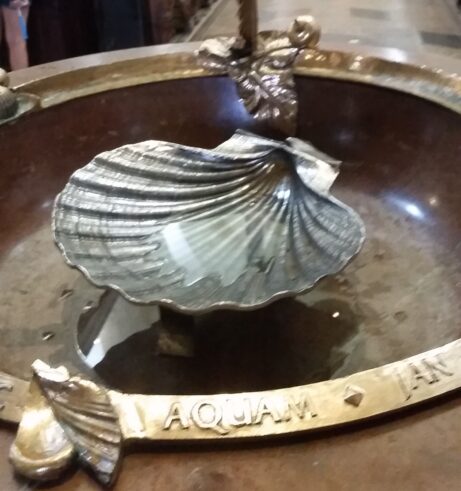
Result
shell / Latin OSTREUM
11. Church of the Virgin Mary under Chain
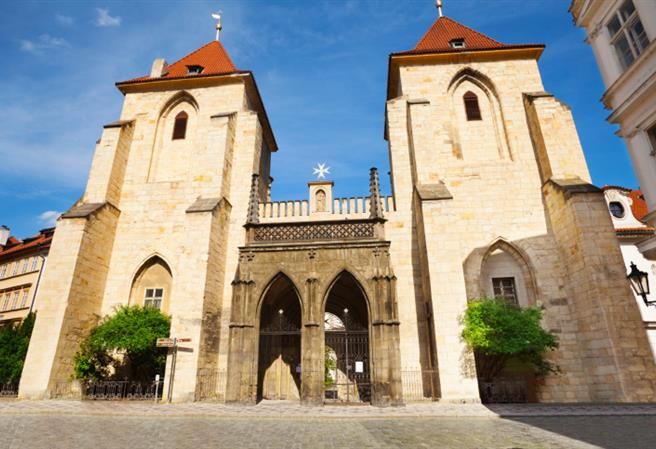
The Order of the Knights of Malta was founded in 11th century Palestine to defend Christians against pagans and to reclaim the Holy Land from Islamic rule. The church as it stands today is the torso of an unfinished Gothic church begun by the monarch Charles IV.
From the sources of the Order of Malta, the full original name of this sanctuary is : "the church of Our Lady under the chain of the end of the bridge". New members of the Order are initiated in the church and various prominent members of the Order are buried there.
Task in the game
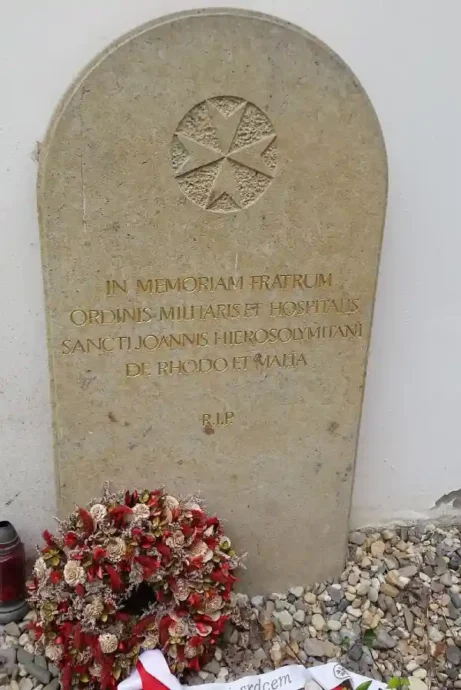
Find the tombstone in the courtyard - what was the name of the island where the Knights were active?
Result
malta / latin MALTA
12. Lennon Wall

A wall with a reference to the singer John Lennon, where inscriptions and paintings have appeared since the 1970s. Since the 1970s it has been called the "Wailing Wall". Chalk poems - mostly love poems - have appeared on it. After John Lennon's death in December 1980, someone used a blank stone slab, which was probably part of a public water supply, to create a symbolic tombstone for John Lennon. The unknown artist wrote in chalk: "For John Lennon" and drew a cross above the inscription.
Task in the game
What is the name of John Lennon's famous song, the inscription can also be found in several places on the wall.
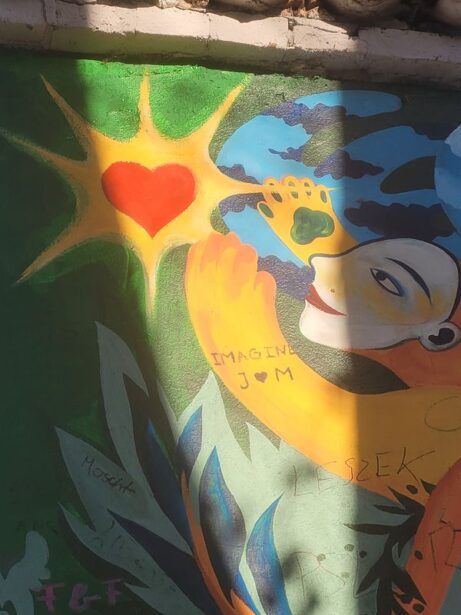
Result
imagine / Latin PHANTASIA
13. Velkopřevorský mlýn (The Grand-Priory Mill)
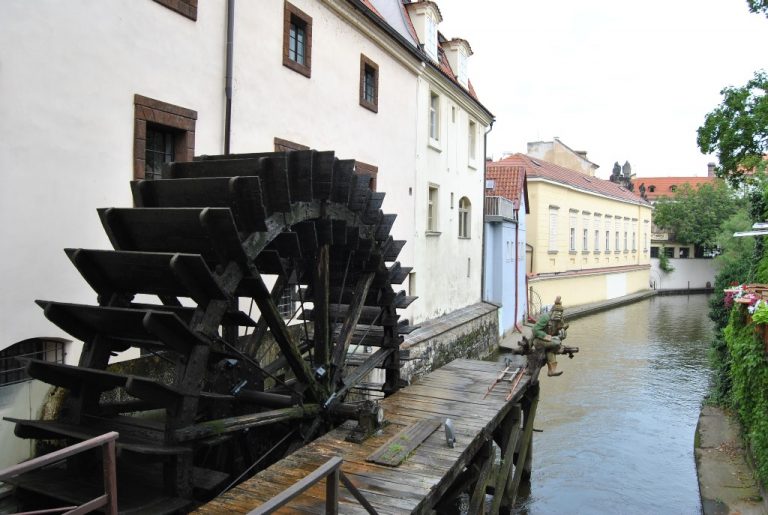
The mill near the Vltava gorge later called Čertovka. It was founded by the Johannites during the reign of Vladislav I when the church and monastery of the Mother of God was established. From 1526 it belonged to the miller Štěpán, after whom the mill was also called Štěpánský or Štěpánovský. The mill changed hands and the mill was, among other things, a feather cleaning plant. The eight-meter mill wheel is more than 100 years old and was not only preserved after the fire in 1938, but also repaired so that it could continue to perform its function if necessary.
Task in the game
How many blades does a mill wheel contain.
Each blade is exactly 10 degrees away from the next.
Result
36 / Latin XXXVI
14. Wall with a hop cone
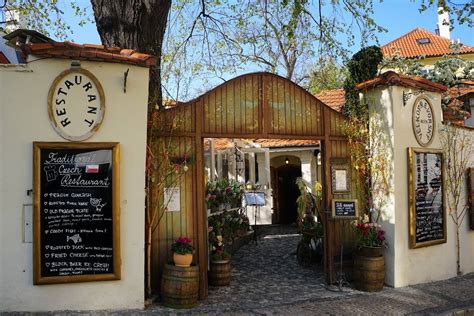
Restaurant Velkopřevorský mlýn is located next to the mill wheel.
Task in the game
Find the donut that is depicted on the wall of the restaurant.
Result
hops / Latin HUMULUS
15. Conclusion

Grail essence with hops total of 4 basic ingredients make up.
You can understand the essence of the Grail, and the other 3 ingredients will be clearly revealed to you if you check off the Latin words you picked up along the way from the cup on the "list".
Task in the game
So what is the Holy Grail of the Czech land?
Result
BEER
The secret formula of the HOLY GRAIL:
"In BOHEMIA, where the old PLATANUS grows, special water springs up - with this the selected malt is washed and mixed. Strain, boil and strain - this will give you a GOLDEN colour. Then mix everything in a RING kettle, as gently as when you make MALTA. The KEY is to add the HUMULLUS, combine the wort in a HARMONY of temperatures with the yeast. Then let it ferment for 36 days until you see the SPARK in it. Finally, like a INFANT JESUS, a divine drink is born - CZECH BEER, 11 degrees, the DREAM of the thirsty, which is the HOLY GRAL!"
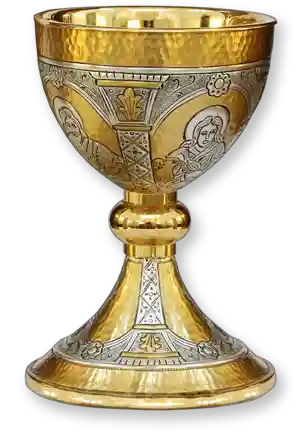
Cherish the secret formula and don't forget to taste the cooked and well chilled Holy Grail in Prague.
Dear pilgrim,
you have now successfully obtained the secret formula of the Holy Grail. You have had a difficult journey, but you have also gained new knowledge and perhaps spent some time in fun.
Speak of your experience with other pilgrims who will go to the city of Prague, for they too may try to obtain the Holy Grail.
Be praised.
The Holy Grail guardians
